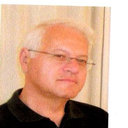Progressing stroke with neurological deterioration in a group of Israeli elderly.
Nyckelord
Abstrakt
Progressing stroke with neurological deterioration (PSND), i.e., neurological deterioration of patients during the first days following a stroke, although not an infrequent event, has hitherto been addressed only by few studies. This is the first investigation conducted in Israel with the aim to determine its prevalence and characteristics. Data regarding 140 patients with first ever stroke were collected prospectively between May 1999 and October 2000. All patients underwent a thorough daily neurological examination over the first 7 days, using the Canadian Neurological Scale. Most (90%), patients had hemiparesis, with dysarthria, aphasia and dysphagia being the most frequent associated neurological deficits. Thirty percent of the patients were on anti-aggregant therapy prior to the stroke. The prevalence of PSND was 23%. The 1-month in-hospital death rate of these PSND patients was 31%. Univariate analysis showed that previous anti-aggregant therapy, Parkinson's disease (PD), obesity, hyperlipidemia, and presence of aphasia were significantly more frequent in the PSND group. In addition, these patients arrived earlier to the emergency room. However, logistic regression analysis showed that only PD and obesity could possibly be considered as predictors for development of PSND. The prevalence as well as the death rate of PSND in this group of Israeli elderly is within the range reported in the literature. However, prior anti-aggregant treatment and PD, are here reported for the first time as associated conditions. Future research will possibly clarify the links between these entities and PSND.


